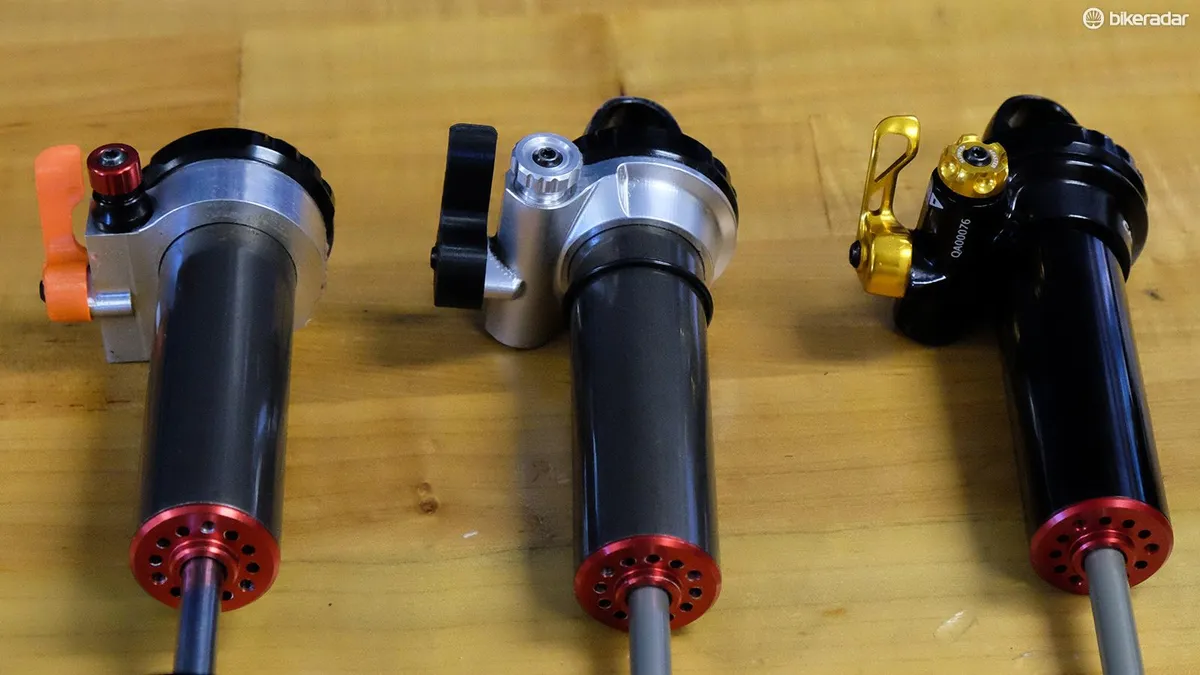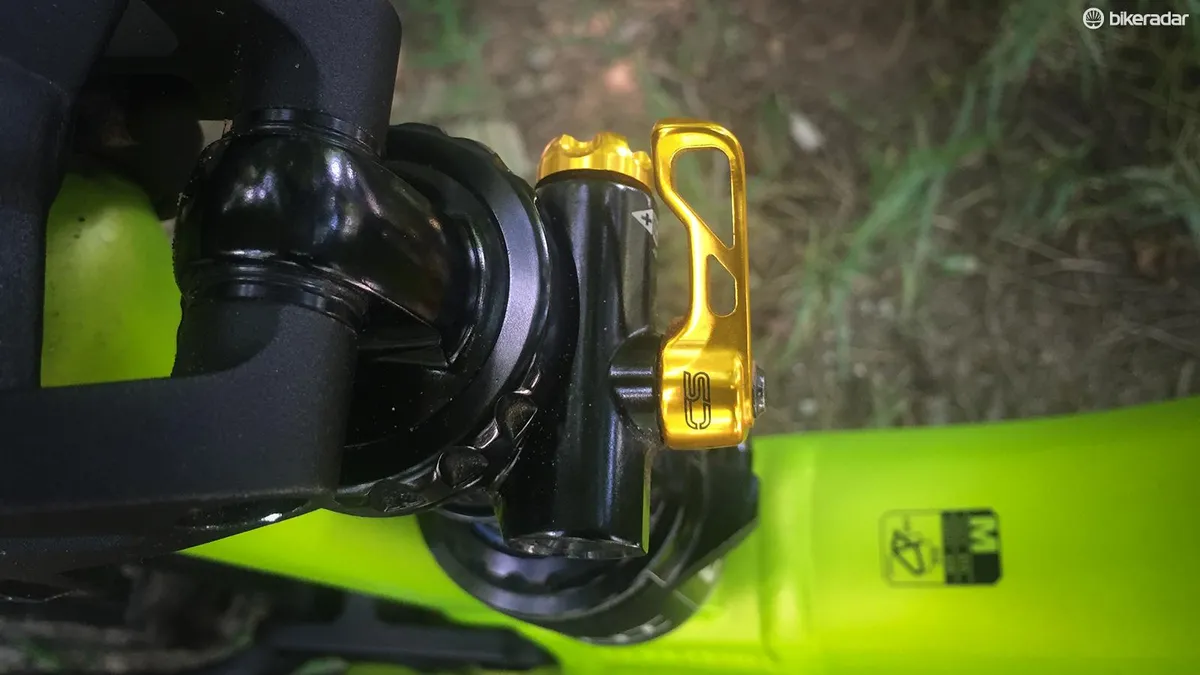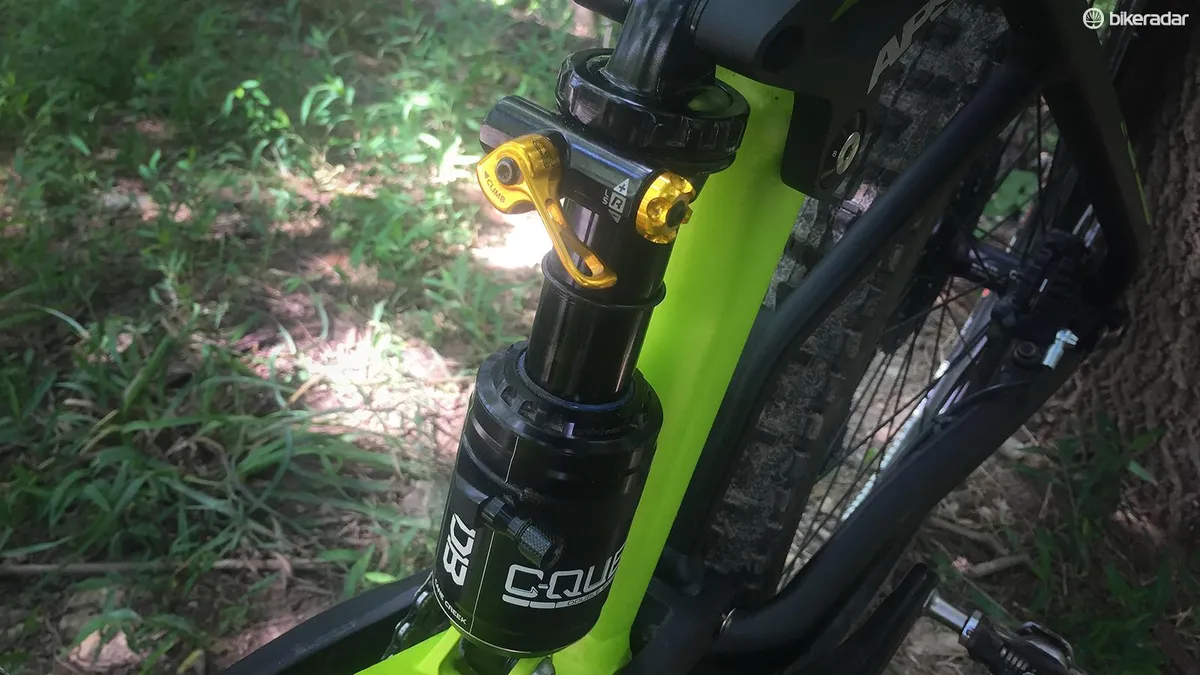When it comes to suspension, Cane Creek has made a name for itself by offering riders shocks with expansive adjustment. The company is attempting to chart a new course by offering riders a simpler, easier to adjust shock that will come equipped on 2017 model mountain bikes.
- How to adjust the rebound and compression settings on your mountain bike
- Cane Creek teases prototype inline coil shock
Keeping pace with the big names

Cane Creek has positioned the C-Quent as an OE suspension product, rather than an aftermarket upgrade. It’s currently available through a handful of Cane Creek suspension partners, including BMC.
“Many companies would spec our shocks on their top-end bikes, but wouldn’t consider it for the mid-level," said Jim Morrison, Cane Creek’s director of engineering.
According to Morrison, this limited spec wasn’t simply an issue of price; it was about complexity. Many product managers felt the wide range of adjustability offered by the DBInline was too intimidating for casual riders. It could even make setting up bikes for test rides into a lengthy process.
To gain ground in a market dominated by Fox and RockShox, this small North Carolina company sought to simplify.
Simple, not stupid

The C-Quent is the least adjustable shock in Cane Creek’s growing shock line. It’s simple by design. The only external adjustments left to the rider are air pressure, low-speed rebound damping and Cane Creek’s Climb Switch, which simultaneously increases low-speed rebound and compression damping to firm and slow the shock to improve climbing performance.
While it might be easy to think of the C-Quent as a dumbed-down version of the DBInline, there are some very smart reasons for developing this shock. For one, Fox and RockShox already offer shocks with factory tunes for specific makes and models, so it makes sense for Cane Creek to follow-suit.
The internals of the C-Quent are designed to offer the base tune of a DBInline for particular models, with just a few options for fine-tuning. With the shock tuned to the kinematics of the bike, the range of the remaining adjustments can be much narrower and more user-friendly.

Internally, there’s still a lot going on. The C-Quent employs Cane Creek’s Double Barrel technology that allows oil to circulate in continuous pathways through the damper. According to Morrison, this tube within a tube design reduces cavitation within the oil, which can hamper suspension performance.
Early impressions

I spent several hours riding the C-Quent on Cane Creek’s home trails on the outskirts of Asheville, North Carolina. The terrain was flowy with banked turns and booters along with plenty of roots thrown in for good measure.
The test bike was the BMC Speedfox 03 Trailcrew. It features 150mm of matched suspension travel in an alloy frame with an SLX drivetrain. This mid-level trail bike is exactly the type of machine that Cane Creek was struggling to gain a foothold on with its other shocks.
With the Climb Switch flipped off, the shock moved freely through its travel for the descents. About midway down the first plunge I realized what I was missing — noise. The C-Quent was conspicuously quiet
As promised, the C-Quent is a breeze to set-up. I set my sag at 30 percent, dialed in all of the available low-speed rebound damping (I would have preferred another two-clicks), and flipped the Climb Switch on for the ascent.
Like Cane Creek’s other shocks with a Climb Switch the effect is subtle, but effective. The Climb Switch is not a firm lockout. It reduces any unwanted suspension movement while allowing the suspension to track the ground and maintain traction.
The Speedfox is already a capable climber, with very little need to firm up the suspension, however the slower rebound offered by the Climb Switch suited my leisurely climbing speed.
With the Climb Switch flipped off, the shock moved freely through its travel for the descents. About midway down the first plunge I realized what I was missing — noise. The C-Quent was conspicuously quiet. I’ve ridden shocks that sounded like angry toilet plungers when pushed hard through a series of small, high velocity impacts, such as a spiderweb of roots. The C-Quent didn’t make a squeak or sputter.
The only downside I experienced while riding the C-Quent was that I maxed out the range of low-speed rebound damping. With the rebound knob turned to its slowest setting the shock still returned a touch faster than I generally like. This is something I hope to sort out in a long-term test.
Aside from the sweet sound of silence and a mismatched range of rebound, the shock offered plenty of support. It’s worth noting that riders can also tune the C-Quent with the same air volume reducers used in the DBInline, should you desire a more progressive feel.
So is the C-Quent enough shock? Well, the available adjustments are different, but on par with a Fox Float DPS or RockShox Monarch. RT3. Unlike these two shocks, there’s no middle ‘trail’ position, but Cane Creek’s Climb Switch is much more useful for riders who ascend singletrack to earn their descents.
My time aboard the C-Quent was too limited to write anything about the durability of this new shock. Though Morrison notes that the company has learned some very hard lessons from a spate of DBInline failures. To improve reliability, the company has reworked its manufacturing and assembly processes.
Is simple better?

Cane Creek’s other shocks offer incredible tuneablity, which makes it easy for some riders to get in over their heads. If you’re a suspension tweaker accustomed to repeatedly sessioning the same section of trail while making one adjustment at a time, then shocks like the DBInline, DBAir CS and DBCoil CS are for you. If, on the other hand, you prefer a simple setup that lets you hop on and ride, the C-Quent is a much more approachable shock.

